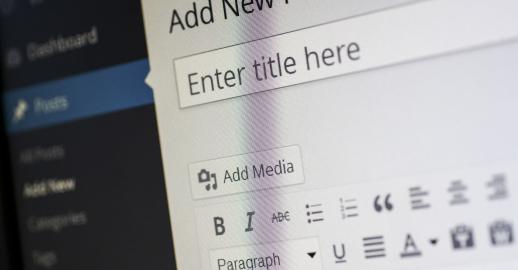20th January 2021
How Important Are Alt Tags For SEO?
The importance of alt tags can sometimes be underestimated. In this article, we explore the importance of alt tags when it comes to SEO and user experience, and we also explain how to write alt text well.
If you have ever added a blog post to your website, you may have noticed a field marked as ‘Alt text’, once you have inserted the main image. The field label or descriptor may say something like this:
‘This text will be used by screen readers, search engines, or when the image cannot be loaded.’
This is because search engines, such as Google and Bing, crawl web pages and are unable to understand image files unless an alt tag has been set.
Alt text is therefore vital for search engines to better understand a page and provide people with the best possible results when they are searching online, as well as provide some clarity for the user if an image fails to load.
Despite continual improvements in visual search and the value of content for users, Google still needs help from humans to understand visual elements. So, by applying an alt tag to an image, you are helping Google to understand what an image is about to serve on the image results page.
What Is Alt Text?
Alt text (alternative text), also known as "alt attributes", “alt descriptions" or “alt tags” are used within HTML code to describe the appearance and function of an image on a page.
What Is Alt Text Used For?
There are three main uses for alt text, which are:
1. Increased web accessibility: For visually impaired people using screen readers, alt attributes will help them to better understand an on-page image. Google uses alt text in the same way, so that it can understand an image because the algorithm can’t cognitively understand an image.
2. Aiding failed loading: Alt text will be displayed in place of an image if an image file cannot be loaded.
3. Improved usability: Alt text provides better image context to search engine crawlers, helping them to index an image properly, as well as for the people consuming your content.
Why is Alt Text Important?
There are a couple of key reasons why alt tags are important:
1. Visibility and Accessibility
The main purpose of an alt tag is to describe images to visitors who are unable to see them, whether this is because they are using screen readers, because their browsers block images or because they are sight-impaired or otherwise unable to visually identify an image.
Including alt text with your images ensures all users can appreciate the content on your site.
Additionally, even if your webpage loads with ease, some people choose to use voice readers because they don’t want to read the page. You can let Siri or Alexa read the page to you.
2. Image SEO
Alongside user experience, alt text provides SEO benefits too. If search engine crawlers don't understand what your image is, it's possible you could either rank for unintended keywords or miss out on ranking altogether.
For example, say you want to use an image of a woman wearing a cap, driving her car with two children in the back. Google may be able to see just that, but not what it truly means. But by adding alt text you can include your target keyword, and on-page keywords are a good way to improve your likelihood of search engine ranking.
So, it’s definitely worth having alt text that describes the image and includes a keyword that you are targeting to provide contextual relevance about the landing page your image is on and show search engines what your page is about. It may be worth using the title of your blog post, if that’s what the image is for.
Furthering this, if your keyword is ‘multi-car insurance’, a Google search would provide a snippet from the top organic listing. But the image that goes with this snippet will also be an image from the top-ranking website. If you think about it, this means that images with optimised alt tags are more likely to populate search results.
Alt Text: What Should You Write?
Google states:
“When choosing alt text, focus on creating useful, information-rich content that uses keywords appropriately and is in context of the content of the page.”
As with the written content on the rest of your page, you should ensure that you are writing naturally and not keyword stuffing. Here are three top tips to make sure you are on the right track when writing your alt text:
1. Use keywords: As mentioned above, try to include your keywords. While your first priority should be describing and providing context to the image, if it makes sense to do so, include your keyword in the alt text of at least one image on the page.
2. Avoid keyword stuffing: It goes without saying that one inclusion of your keyword is worth doing, but keep it at that and don’t overdo it! Otherwise, you risk negatively impacting user experience and readability.
3. Be concise: a general rule would be to keep your alt text at around 125 characters or less.
If you would like to know more about how to prioritise your digital marketing efforts in 2021 or if you would like some help with any aspect of your digital marketing, don’t hesitate to get in touch with SilverDisc.






